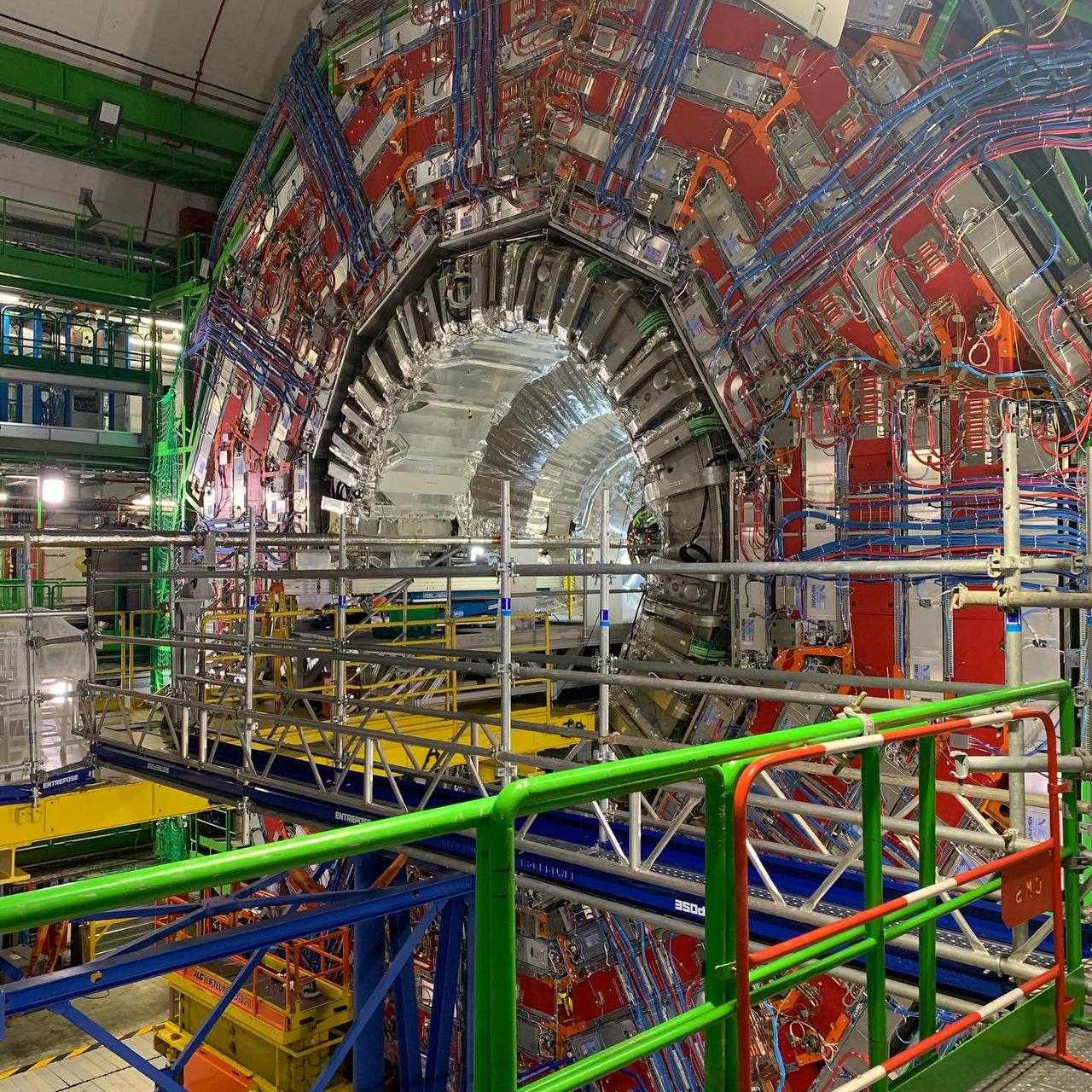TPU physicists install new diamond sensors for CMS experiment on Large Hadron Collider

Tomsk Polytechnic University
Published on 7 October 2021

A background radiation monitoring system and parameters of colliding beams have been changed at the Compact Muon Solenoid (CMS), one of the large general-purpose particle detectors of the Large Hadron Collider (LHC). The beam condition monitor leakage (BCML) system is one of the most essential parts of the system required for the protection of the CMS separate units and unit electronics from crucial radiation damages.
For the BCML system, scientists of Tomsk Polytechnic University installed eight new diamond sensors, which are the main part of it. It is planned that the new sensors will operate from three to five years, until the next detector renewal. Seamless operation of the BCML system will allow scientists to obtain new data on the structure of matter at the elementary level.
Nowadays, the LHC is the world’s largest and most powerful charged particle accelerator. Hadron beams are a class of particles, including protons, which accelerate and collide. Here at the LHC, scientists from all over the world research what happens as a result of such collisions.
There are large detectors set around the beam collision points. CMS is one of the four main detectors. CMS is 16 m in diameter, 25 m long. It is a large general-purpose particle physics detector and designed for both research and verification of predictions of the Standard Model of Elementary Particles, including the properties of the Higgs boson, and search for physics beyond the Standard Model, additional measurements and dark matter.
The scientists and engineers of the TPU Research School of High-Energy Physics jointly with colleagues from the European Organization for Nuclear Research (CERN), the German Electron Synchrotron (DESY), Princeton University (the USA), the University of Canterbury (New Zealand) and other organizations take part in the CMS Beam Radiation Instrumentation and Luminosity (BRIL) project. The TPU scientists are in charge of the development, renewal and maintenance of the system for slow monitoring of proton collision and heavy nuclei and emergency beam loss.
This BCML system allows scientists to change the background radiation from proton collision, to analyze the changes of the background radiation during both short times relevant to the random deviations of individual particles and to record long-term changes. These changes can be related to the deviations in the beam motion or for instance, vacuum loss in the beam transport channel.
In case of critical deviations, a beam has to be stopped, i.e. forcibly lost. Otherwise, long-term exposure to a beam moving with colossal energy can lead to irreversible damages of the complicated and expensive systems of the detector and collider. Every emergency or false beam loss is a true incident that has to be investigated.
The BCML system that the TPU scientists work with is complicated and multicomponent. The most important part of this system is the set of diamond sensors located in the heart of the detector next to the proton collision point. Diamond is the most radiation-resistant material, however, even this material gradually loses its properties due to the ultra-high radiation doses and it has to be changed.
The diamond sensors are plates of synthetic diamonds of the highest quality with metal contacts from chromium and gold deposited on them. Plate crystals are soldered to special boards, which are deposited by gold as well. During the operation of the sensor, over 500 V voltage is applied to it. When a particle flies through the sensor, it obtains an electric current, which can be measured. If current strength surpasses the set threshold during a certain interval, then the system signals about the beam loss.
“The sensors in the system for slow monitoring were changed the last time in 2015. We have just changed eight sensors, which will serve for about the next five years. Preparation for the installation, including overall inspection of the system and calibration of the new sensors, required several months of intense work on site. The installation of the system in the shaft continued for two days and nights.Due to these new sensors, our colleagues from the other CMS research groups will be able to collect new amounts of data for the next period of collider’s operation,” Alexey Shevelev, Research Fellow of the TPU Research School of High-Energy Physics, says.
According to the expert, there is a search for new materials, which will be able to reduce the cost of the sensors and extend their operational life among the tasks of the research team.
“Actually, CERN is preparing to the transition of the LHC project to the High-Luminosity LHC (HL-LHC) project. To implement it, all the systems of the accelerator are reordered. According to the calculations, the number of collisions will increase in dozen times, radiation fields will increase and consequently, the diamond sensors will lose their properties faster and they will have to be changed more often. Therefore, we are actively searching for ways how to reduce the cost of system maintenance and what diamonds can be changed for. In the autumn, in the experimental part of our detector, we are planning to install the samples of Russian manufactured diamonds, which are several times cheaper than the ones which are currently used, and also to install several times cheaper sapphire crystals. We are going to research their radiation resistance and degradation rate,” Vitaly Okhotnikov, Junior Research Fellow of the TPU Research School of High-Energy Physics, adds.
